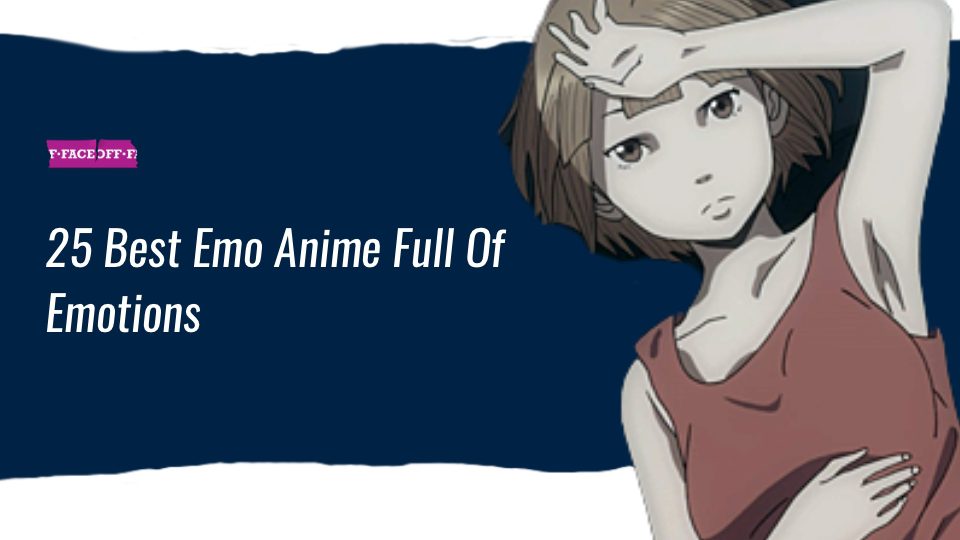Emo refers to a genre of anime that deals with darker or melancholic themes and complex storylines. Emo anime explores themes such as grief, loss, and the struggles of growing up. The characters are usually emotionally complex or intense, and they have “EMO” personalities. These characters struggle with negative emotions, they may have melancholic or introspective personalities. They might also have a tendency to isolate themselves or have intense feelings that they have trouble controlling. Characters often struggle with feelings of sadness, and alienation.
It’s worth noting that EMO is not an official genre, but it’s more of a colloquial way of describing anime with an intense and melancholic atmosphere. These are known for their depth and thought-provoking themes. Emo anime can make for some very powerful and moving stories, as well as some that are just downright depressing. Either way, these are usually the sorts of anime that stay with you long after you’ve finished watching them. If you’re looking for an Emo anime that will really pull at your heartstrings, here is a list of the best 25 reviewed and ranked.
25. Sing “Yesterday” for Me
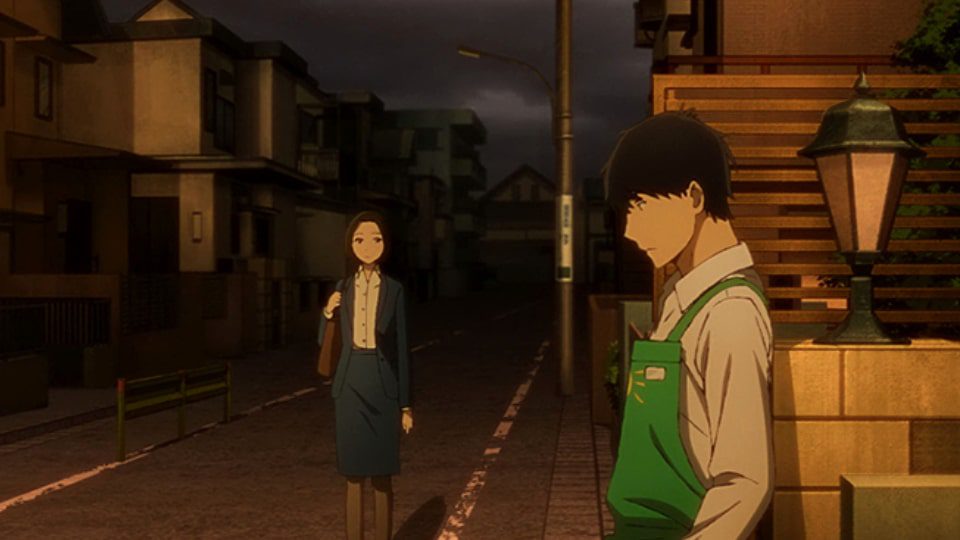
Rikuo is a young man who has completed his undergraduate studies, but without the ambition required by the Japanese economy – Rikuo finds himself as a store clerk. The days pass lazily until his life takes on meaning when two characters enter the store. They are Haru, a girl who dropped out of high school, works in a bar, and has a pet crow, and the other is Shinako, Rikuo’s unrequited love from his graduation days and now a teacher at a local high school.
Sing ‘Yesterday’ for Me is a distilled essence of emo serenity. A murky atmosphere covers every corner of the small town where the plot takes place, a kind of hint that every regular character in the series hides a secret, or at least a past that they wish not to talk about. You can see it as an anime about directionless people who don’t want a map.
I would appreciate it if you would give Sing ‘Yesterday’ for Me a chance, but if you choose not to continue with it I will certainly understand why. Its gloom is not for everyone. Personally, I like this style, and to its credit, it doesn’t look like other recent emo anime series.
24. Subete ga F ni Naru (The Perfect Insider )
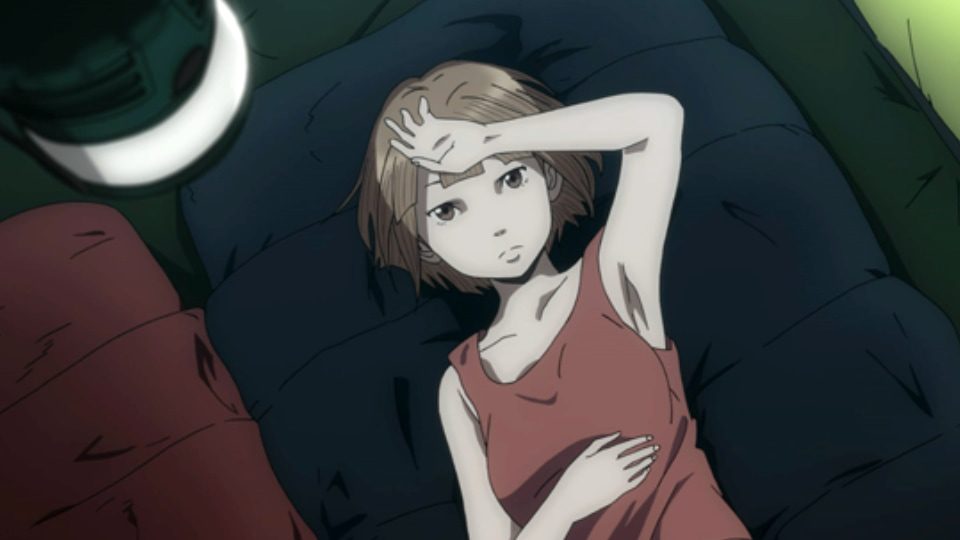
Moe is a young, genius, and rich student who spends most of her time in the lab in the company of Professor Saikawa and his colleagues. Saikwa is a genius as well. One day Moe is video-chatting with Shiki, she belongs to the trite breed of geniuses, the kind that no one understands. She murdered both her parents when she was 14, and the court ruled that she was psychologically incompetent to stand trial for her actions.
For the past decade and a half, Shiki has been living in an isolated room in a research laboratory on some island, and now the psychopathic killer chats with Moe; The conversation lasts for long minutes during which questions are raised about personal, scientific, and philosophical issues. Sometime after the conversation, Moe suggests to all the members of the lab to go on vacation to the same island where Shiki is imprisoned. However, after Moe and Saikwa arrive on the scene, Shiki is brutally murdered.
The case of the murder ignites a large number of questions, the first of which is: how? After all, Shiki was quarantined and monitored 24/7. A number of scientists are present on the night of the murder, and anyone could be a suspect. Subete ga F ni Naru is an example for those who want to avoid bad emo anime. The set of rules for this is quite simple: Create the most annoying heroine imaginable. Make her even more annoying.
23. Myself; Yourself
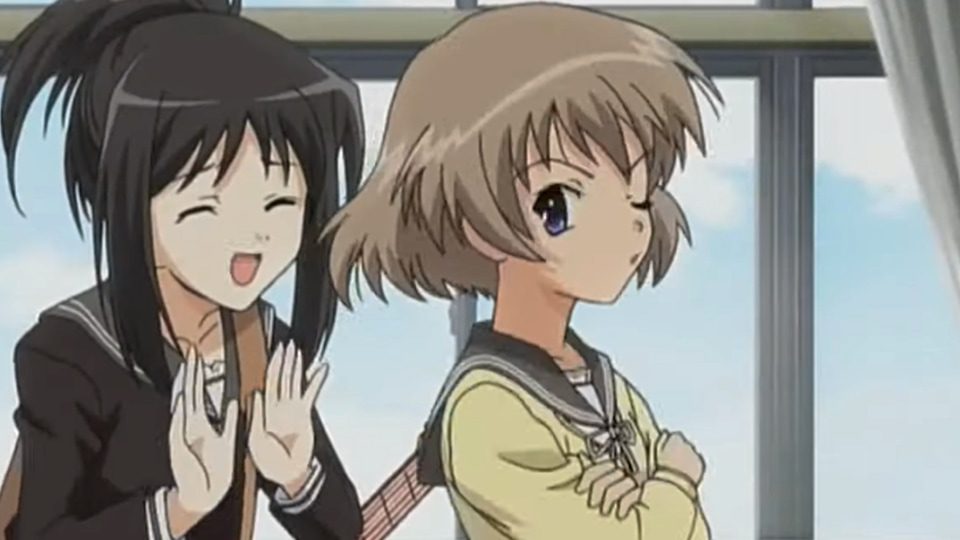
After living in Sakuranomori for several years, Sana Hidaka returns to his hometown after living in the city for several years. Upon his return, he discovers that many things have changed, including his childhood friends. When he reconnects with them, he discovers the truth about his past and the people he thought he knew.
Myself; Yourself is a dramatic and emotional story about growing up. A complex and realistic personality is evident in the characters and their interactions with one another. As a result of its strong character development and emo storytelling, the anime is a realistic depiction of teenage life and its issues.
22. Tokyo Ghoul
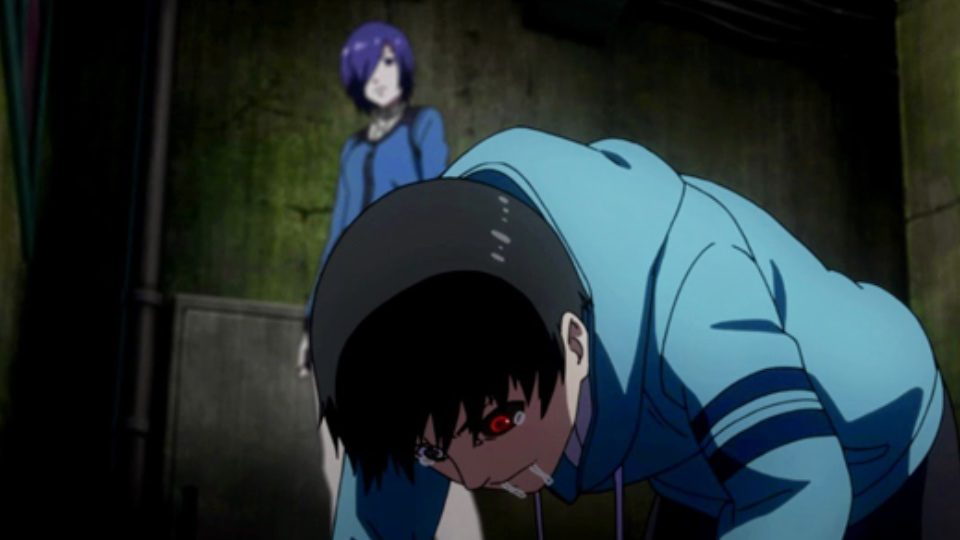
Tokyo Ghoul is an emo anime that explores the darker side of humanity through the eyes of ghouls. The first season started strong with an impressive opening episode, but the episodes that followed didn’t really grab me. I really liked her final episode, which made me continue to Route A, and apart from some nice action here and there, it felt terribly shallow to me.
Kaneki is a hot bad boy, who falls victim to a beautiful girl named Riza who turns out to be a “Ghoul” – a man-eating monster. As luck would have it, an accident occurs and kills Riza before it finishes eating Kaneki for breakfast, but when he wakes up in the hospital he is astonished to discover that parts of her body have been implanted in him, making him a ghoul as well. Without the ability to enjoy normal food, and with the new need to eat humans – Kaneki had to adapt to a new and cruel depressing world.
Kaneki struggles to find a sense of self and acceptance. He has to come to terms with the fact that he is no longer human and that he is part of a group that is shunned by society. His inner turmoil and the constant conflict between his human and ghoul sides make him a complex (more like super-annoying emo-) character.
21. A Letter to Momo
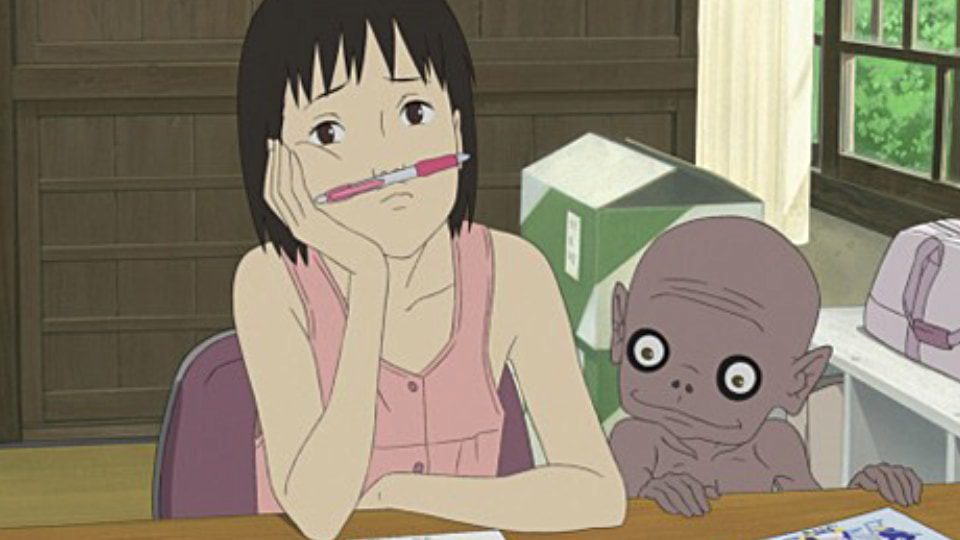
Momo and Ikoko lost the pillar of their family. For Momo he was a warm father, for Ikoko he was a loving husband. Death is good timing for change, so they both move to the small town where Ikoko Ima grew up, a small, pastoral island called Xiao.
There are of course moments of adaptation and change, but Momo gets used to the place, she walks around with a sullen face and refuses to cooperate with her mother’s attempts to make Momo friends with kids her own age.
Losing a parent is not easy in itself, but for Momo it is a doubly difficult experience: in the last conversation between the two of them, she said to her dad “Papa I hope you don’t come back”, just before he left for the boat from which he -yep – he did not return. To sprinkle salt on the wounds, she finds after his death a letter he left for her and it says “Dear Child…”. And that’s it. What did he plan to write? Well, she won’t know that anymore. What, I forgot to mention that there are demons. So yes, three loser demons follow Momo and Ikoko everywhere, but only she gets to see them. The reason for the whole affair is mysterious for most of the film, but it is the dynamic between the four that sets the story.
A Letter to Momo is heartwarming and very emotional two hours will take you to the farthest place on the planet but will feel closer than ever.
20. Another
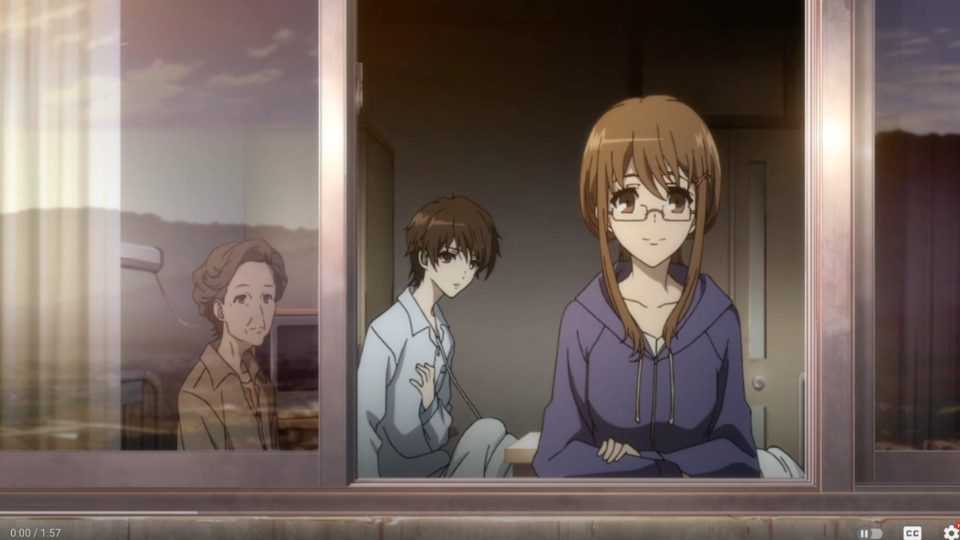
There hasn’t been before or since (well, for now) a better classic horror anime than Another.
The plot follows a 15-year-old student named Kouichi Sakakibara who moves to his aunt’s house in a small town in order to recover from a lung disease, but at the school, he is enrolled in he notices something strange: all the students, even the teacher, completely ignore one of the students in the class. Sakakibara reveals that the class he transferred to suffers from a curse, and from their things only get more complicated.
The tension effect in Another is second to none, much more so than the dark design of Studio P. A Works, a studio that specializes in series that take place in small towns. It set a new standard for the genre.
19. Elfen Lied
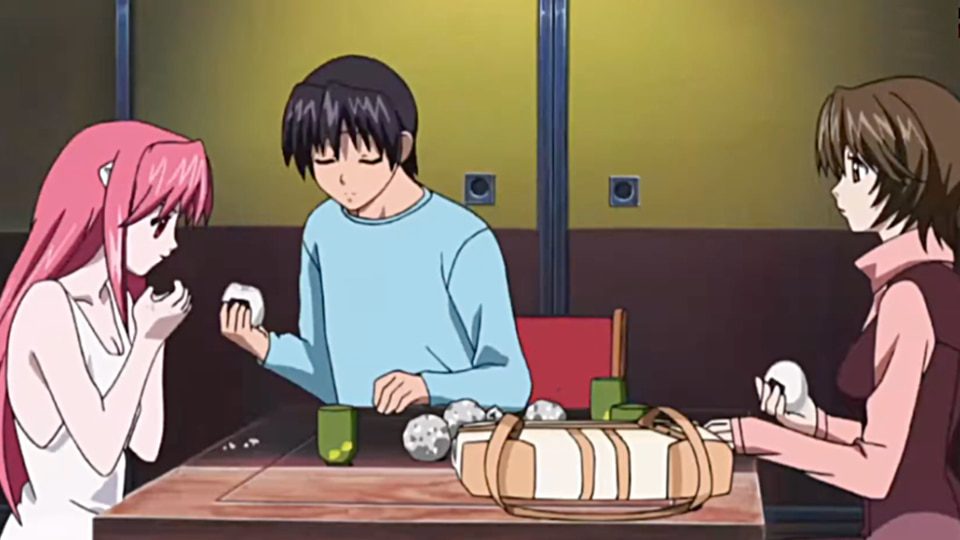
Here is an emo anime that delves into some deep and heavy themes. It follows a group of genetically engineered beings known as “Diclonii,” who possess telekinetic powers and horns on their heads. It examines the idea of what it means to be human as well as the impact that societal prejudice can have on those who are considered different by society.
Elfen Lied does not shy away from depicting the brutal reality of the situation, which can be difficult to watch at times, but it also adds to the overall impact and realism. There is a particular aspect of the series that stands out: the relationship between Lucy and Kouta. There is a lot of tenderness and tragedy in this dynamic. It explores their relationship and the themes of love, hate, and forgiveness in so many different ways.
18. Ergo Proxy
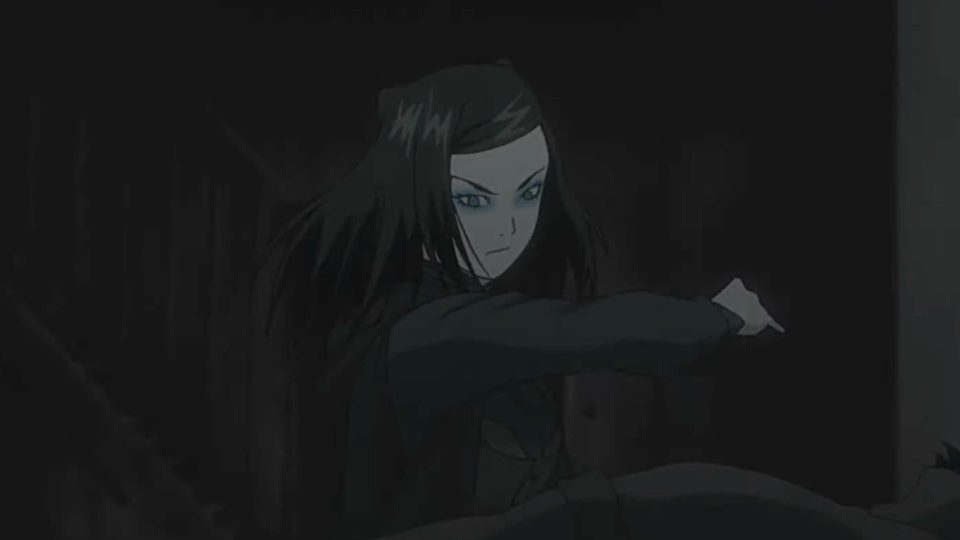
Ergo Proxy is a flagship emo series. The guys at Anime4 called this a “Brainpack” anime, and I can’t say I don’t understand why, but I love that style and I enjoyed it as I’ve never enjoyed it before (almost). Always when I talk about this series I remember its first minute. It opens with the coming to life of one of the creatures starring in it, and I promise you that your heart rate will increase. The animation section is simply amazing (not to mention the sounder) and it gives a twisted opening kick to a plot that is difficult to understand.
The plot tells a story of a futuristic world where people have moved to live in closed domes that protect them from the air pollution outside. The people in the domes spend their lives in a casual routine under strict behavior requirements from the city leadership (like in 1984 or the island). An investigator in the city’s security forces (who also happens to be the granddaughter of the Supreme Ruler) notices a number of strange events happening around the city and begins an investigation that leads her to unfamiliar territories.
17. The Garden of Words
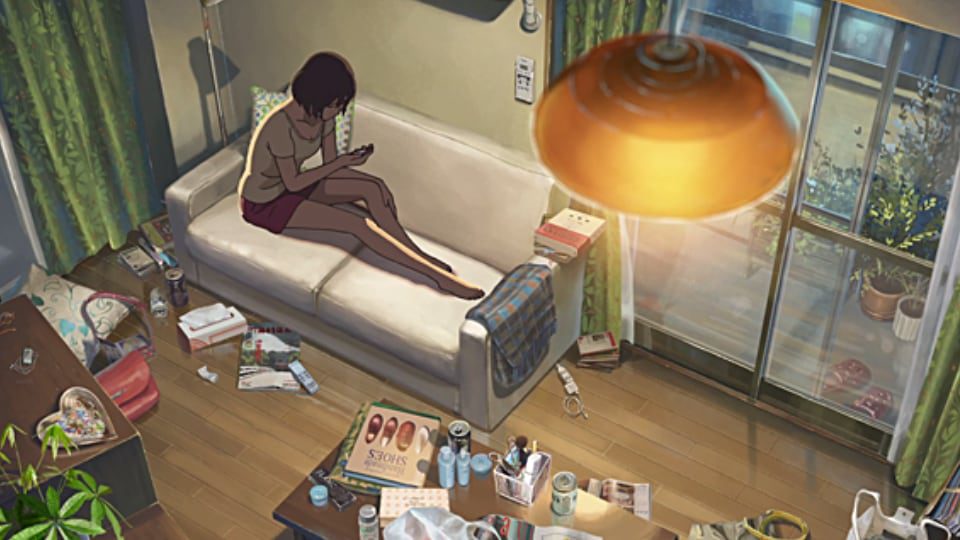
The plot deals with what the acclaimed creator knows how to do best: personal relationships between a man and a woman. In this case, it is a relationship (sort of) that is forged between Takao, a 15-year-old high school student, and Yukino – a young woman from the white-collar class. It is not an emo anime about forbidden love or overcoming dark urges, but a simple story about two people who serve as support for each other. Every rainy morning Takao rushes from school to go to the public garden, where he meets Yukino who is in this garden every day.
Shinkai does not reveal much about the lives of the two heroes. It is known that Takao comes from a particularly unusual family and that Yukino has dilemmas she faces, but the film does not dwell on the problems. He dwells on their solution. Takao opens his heart and his life to the woman whose name he doesn’t even know, while she listens, and sometimes advises, without Takao realizing that these meetings are also therapy for her. During the meetings between Takao and Yukino, there is a constant feeling that the meetings between the two cannot last forever.
16. Plastic Memories
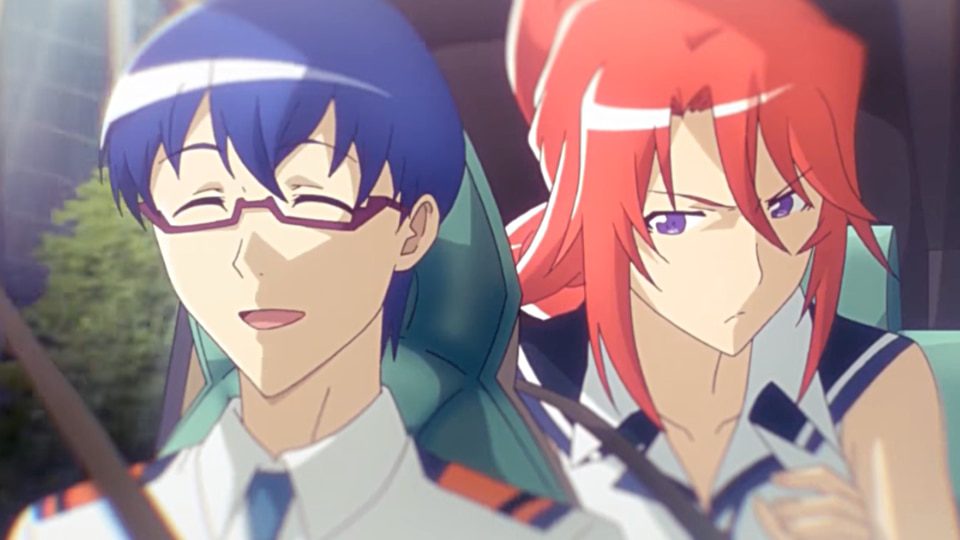
Somewhere in the future (the near future this time) humans live alongside androids that look incredibly human. SAI Corp, the corporation that is responsible for the finest androids on the market, produces a line called ‘Giftea’ which the corporation leases to people who are interested in a child, grandchild, friend, or servant. The series follows a special section at SAI Corp whose members’ job is to collect androids that have reached the end of their lifespan.
Plastic Memories definitely meets the definition of ‘refreshing emo anime’’: it is actually a tear-jerking comedy drama. Most of SAI Corp’s customers are single people: a couple without children, a grandmother who lives in the slams, etc. The role of the heroes of the series is not particularly pleasant, after all, they have to reach those poor people and take from them the most important thing in the world.
The role of this emo is to make you cry, something that will happen already in the first episode. So that you don’t need a hug and a pillow, the series is immersed in humor and amusing characters. In order to keep the series interesting for the long term, the members of the SAI Corp unit are made up – in part – of androids. This means, basically, that the final episode is going to cause clinical depression.
15. Death Parade
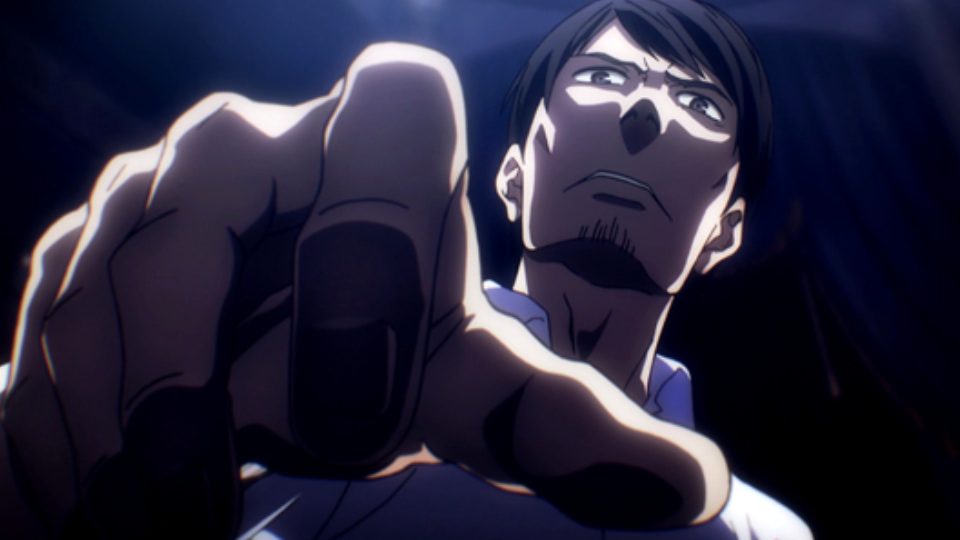
The opening theme alone warrants a place on the list, but the emo anime series itself is also one of the great masterpieces. The anime takes place in a pub where people go right after they’ve dropped dead. In the pub, the dead participate in a gambling game (like darts or bowling) but with a twist that makes them reveal the dark secrets of their lives and the circumstances of their deaths; At the end of the episode, the bartender, decides whether the deceased will be sent to reincarnation or to an eternal Void.
The beauty of the whole story is that each episode is presented from the point of view of the confused dead man who has lost his memories, and only during the game do we get the parts of the attachment through flashbacks. We, the viewers, have no way of knowing ahead of time whether the dead person is indeed worthy of reincarnation or not – which leads to some of the most intense episodes I’ve seen in the last decade, with a variety of stories that unfold as tragedy before our eyes.
Death Parade is a masterpiece that you don’t see every day and watching it is an opportunity not to be missed.
14. Clannad
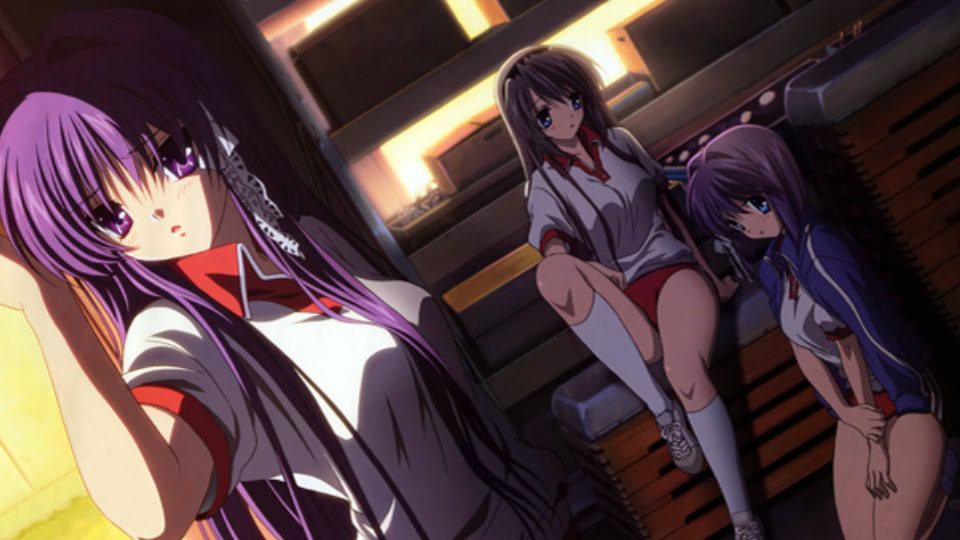
For those who are not yet familiar with Clannad (don’t be ashamed, I was in your shoes until a month ago), this is a tearjerker emo that you cannot afford to miss. The series consists of two seasons, Clannad and Clannad: After Story.
Tomoya Okazaki is a delinquent student who at the beginning of his last year in high school befriends Nagisa, a student who repeats her twelfth year because she was sick. Together they spend time with Tomoya’s other friends, making friends With new people, helping those who need it, and doing a lot of stupid things. In short, the first series of Clannad is clearly not special.
The plot progresses in the range between emotional depression and gentle optimism. Other emo series reveal their premise from the first episode, but in Clannad, you have to go through 30 episodes before discovering its true nature. The second season is so good that I watched it all in one day. Anyone who has watched Clannad must relate to the whirlwind of emotions I felt that day.
13. Serial Experiments Lain
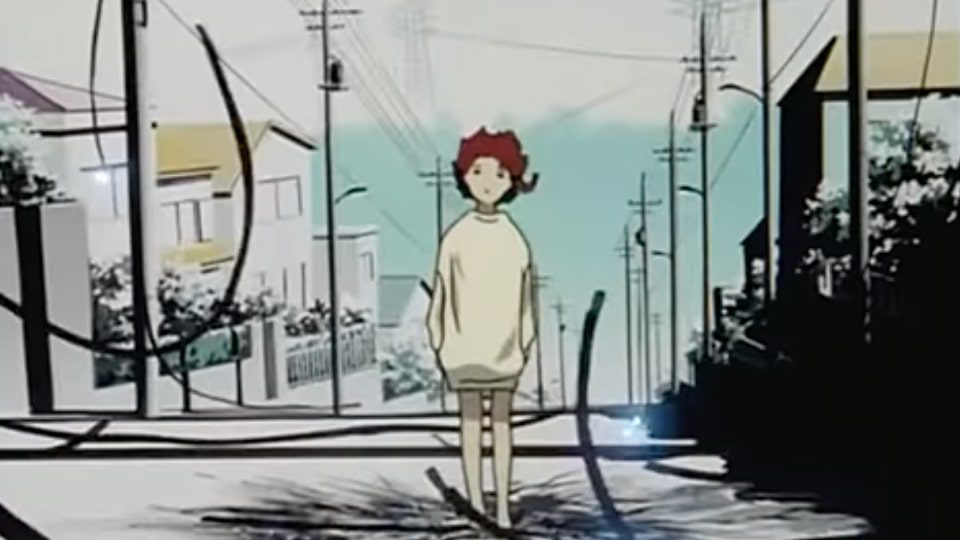
After receiving an email from a dead classmate, Lain Iwakura becomes fascinated with the Internet’s virtual world. As she delves deeper into the network, she begins to experience strange occurrences and becomes embroiled in a conspiracy involving “Wired,” a virtual reality parallel to our own. As well as its unique visual style, the series is known for its complex and abstract storytelling. Featuring a minimalistic soundtrack that adds to the eerie emo atmosphere, the animation is highly detailed and experimental with a strong focus on symbolism and surrealism.
Serial Experiments Lain explores the human condition in the digital age in an interesting way.as well as the human condition in the digital age in an interesting way.
12. Nana
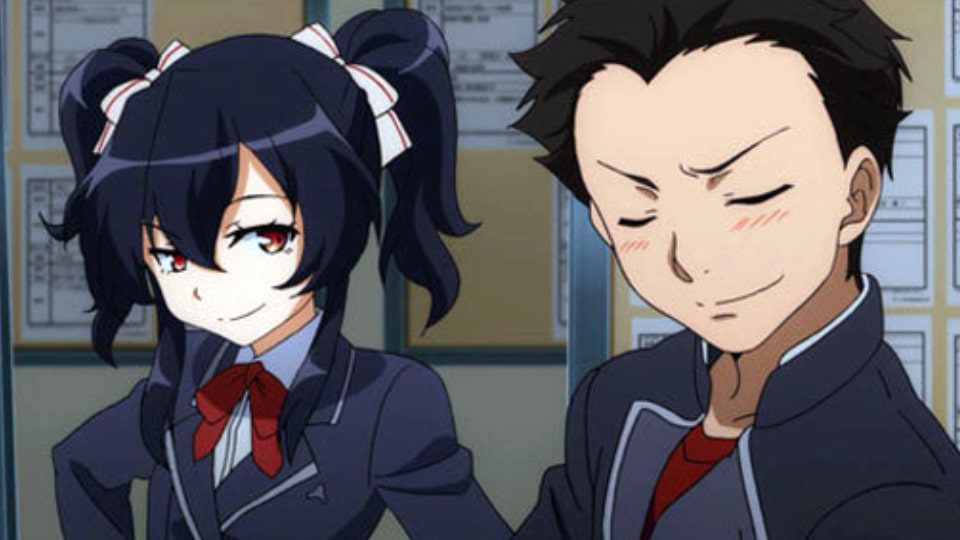
The plot of the emo series takes us to an artificial island built as a place where young people can realize their full potential. If this sentence reminds you of your parents’ days at school, then yes: the island actually consists of schools, where 80% of the residents are students.
Jugo Yama is a young man who moves to the island after being disowned by his father. In the cheap dorm room where he lives, Jugo finds another lodger, Nanana Ryogazu, who does nothing but eat pudding and play video games. Getting rid of Nanana is impossible because she is actually the ghost of a girl who was murdered 10 years ago. Her spirit wanders the planet hoping to find out who her killer is, and Jojo is now helping her. From there Jogo joins the school’s adventure club, and together they hunt for treasures that are hidden on the island and are called “Nanana Collection” – named after Nanana who first found them when she was part of a legendary adventure club called Great 7.
Nana doesn’t realize half of its potential and turns to personal drama, soap operas, and generic shounen fights. The members of the adventure club are uninteresting people. Jogo, as the protagonist, is an average boy with common sense and a lack of charisma. Even when a dark history about him is revealed, Jogo remains a thoroughly boring protagonist. I like Nanana, and if she was the main protagonist, I would be even happier. But Nanana is not allowed to leave Jogo’s room, which leaves her as a mentor who does not appear in all episodes of the series.
To the benefit of the emo anime, it will be said that it looks good: it is full of colors and cheerful, the characters are gracefully designed, and the soundtrack… not bad… I think. I don’t remember suffering from it, so I guess it’s a fine emo anime.
11. Darker than Black
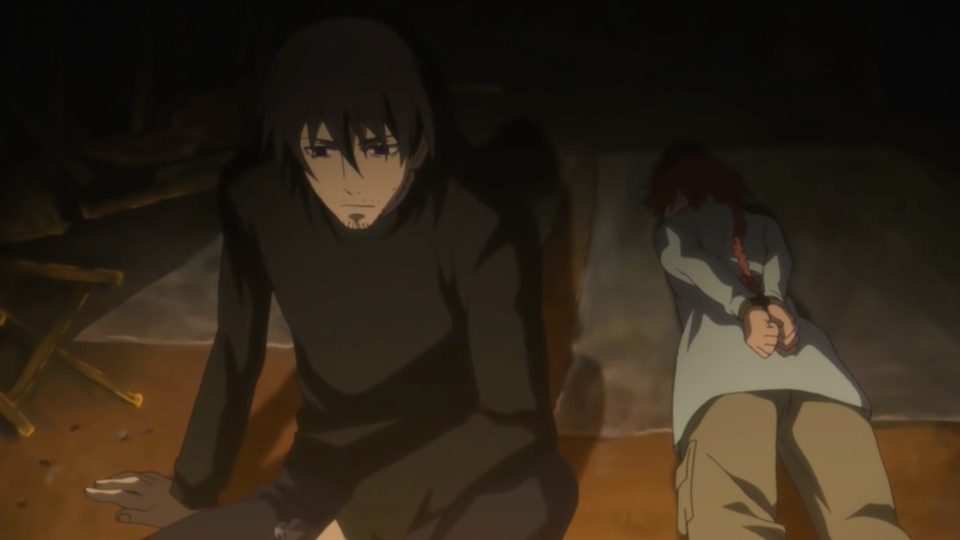
10 plot years ago, a mysterious, impenetrable territory known as the “Gate of Hell” appeared in Tokyo. At the same time, it changed the face of the sky and made the landscape disappear. The real stars in the sky disappeared and false stars appeared in their place. At the same time, people with special abilities appeared, some of them known as Contractors and the others part as ‘Dolls’.
The various nations in the world keep the existence of contractors a secret from the public and use the contractors as spies and agents. The dolls, lacking personality, use observant spirits in order to be somewhere, spiritually, without physically being there. Each doll has a different form to send the observing spirit, first, the doll needs to be in contact with its intermediary substance, for example, Yin, its intermediary substance is water, so it can send its observing spirit anywhere there is water. There is another use for the doll and it is – you can plant memories of another person in the doll, and the doll will already imitate the person exactly.
The contractors will often be found in battles to obtain important information. The fake stars actually denote contractors, so each contractor has a corresponding star. As soon as any contractor uses their powers, their corresponding star will appear in the sky. Each contractor has his own ‘Missier code’, for example, Hei’s Messier code – is BK201. Still, the use of their powers is achieved by giving up their humanity. When a contractor uses his powers on him to pay, beforehand, a certain price, that’s how a contractor actually makes a contract – he pays a certain price and in return can use his powers. They are ruthless, and will often work for one of a variety of rival groups/corporations as spies or assassins. In any case, initially, it is not possible to know what the ultimate goal of these groups is.
10. Kimi ni Todoke
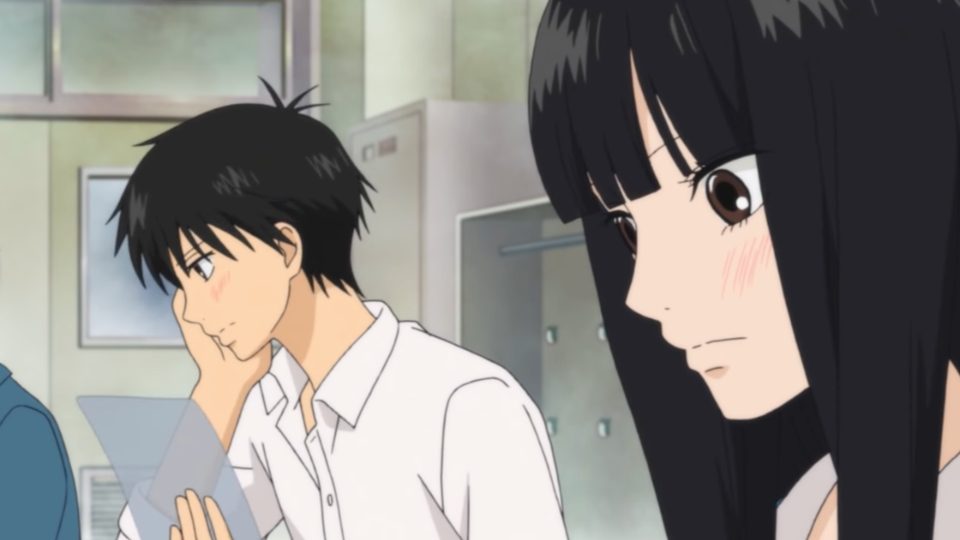
Sawako is a withdrawn cute girl who has a hard time making friends due to her appearance and reputation. Her life changes when she meets Shota Kazehaya, a popular and outgoing boy in her class, who is kind to her and helps her to break out of her shell. As Sawako starts to make friends and become more confident, she begins to fall in love with Kazehaya, but she struggles to express her feelings to him. Meanwhile, Kazehaya also starts to develop feelings for Sawako, but he is unsure if she feels the same way.
The story follows Sawako’s journey as she learns to overcome her insecurities and express her true self to others, and the struggles she faces in trying to navigate the complexities of friendship and love. It’s a heartwarming story about self-discovery, acceptance, and the power of human connection. Kimi ni Todoke is an emo anime that explores the difficulties of social interactions, rejection, and the fear of being misunderstood.
The series is about a boy named Harima Kosei who played the piano as a child, but due to a traumatic event he experienced, he is no longer able to hear the melodies emanating from his playing and therefore decides to leave the world of music. All this changes when a smiling and energetic girl named Kaori enters his life and shows him sides he didn’t know and never thought about when it comes to music.
If there is something that many people have an affinity for – it is music, and even if it is classical music that is not exactly the most heard today, there is something very attractive and evoking empathy in the way the series treats it.
9. Anohana: The Flower We Saw That Day
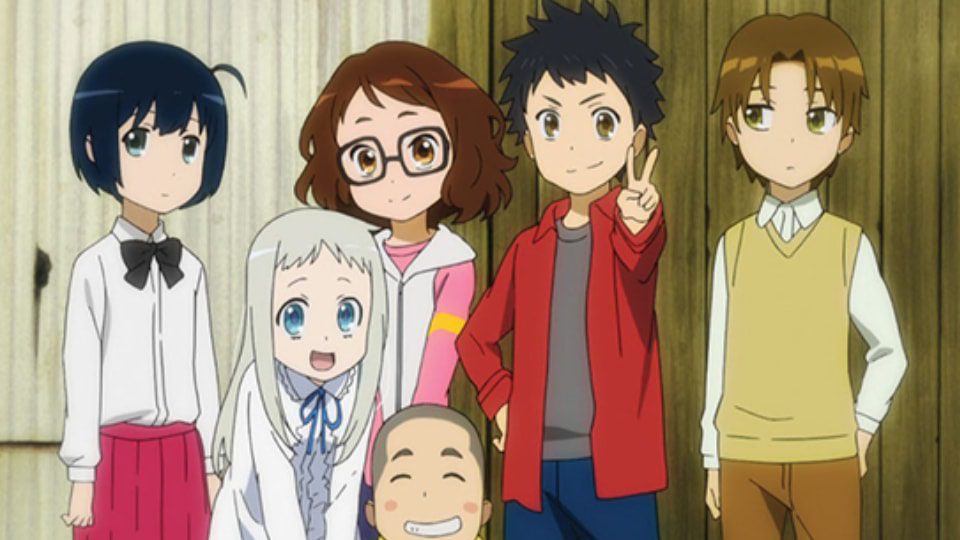
An original josei anime from Noitamina (I stopped counting) that deals with a group of boys, and childhood friends, each of whom takes a different path following the sudden death of Menma, one of the group members. Jintan, who was the leader of the gang, has since been locked in his house, avoiding social contact and not attending school. One day the ghost (or hallucination) of Menma comes to Jintan and refuses to leave. According to her, she is unable to pass to the next world until her wish comes true. the problem? She doesn’t remember what the wish is. Thus the Hikikomori Jintan is forced to reunite the friends from before to allow Manama (or whatever it is) to move on.
Anohana: The Flower We Saw That Day deals with grief and the lingering regrets of the past. It follows a group who must accept the death of their friend whilst haunted by guilt, remorse, and feelings of helplessness. It certainly doesn’t act like a typical emo anime, it is both melancholic and optimistic.
8. Death Note
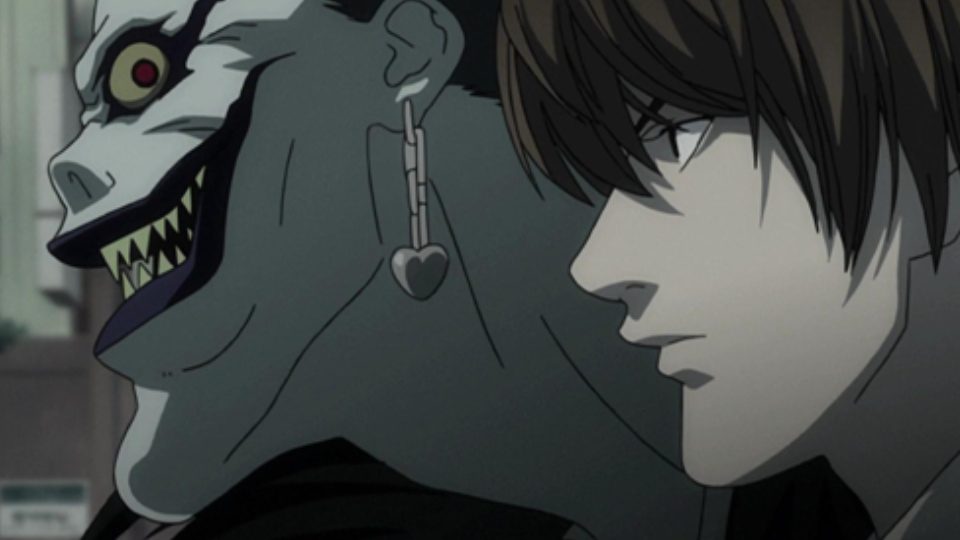
Yagami Light is a gifted boy and one of the smartest students in Japan. Because he is so intelligent, Light knows that humanity is lost, mainly because in his immediate environment there is violence and stupidity. Ryuk is a bored shinigami who decides to drop a death notebook on Earth: a supernatural notebook that kills everyone whose name is written in it.
To avoid annoying “yes but what if…” style questions, this notebook is accompanied by 5,310 rules (plus or minus). By the way, you won’t believe who finds the notebook – Lite! what is the chance Light is skeptical, but he takes the notebook anyway and finds out, the hard way, that it works. As a result, he decides to use it to create order in the world and make every criminal a criminal. The Interpol notices that criminals are dying one by one, and a famous and mysterious detective who calls himself “L” is hired to try and catch the one the world calls ‘Kira’, and so begins the famous cat and mouse chase in history (which is not Tom and Jerry).
Light’s actions and motivations are driven by a desire to rid the world of crime and create a utopia, but as he continues to use the Death Note, he becomes increasingly consumed by his own power and begins to lose his sense of morality. This leads to a moral spiral, which makes the audience question their own sense of morality.
Despite its shortcomings, Death Note is a great emo anime. Years have passed since it went on the air and it is still relevant.
7. Welcome to the NHK
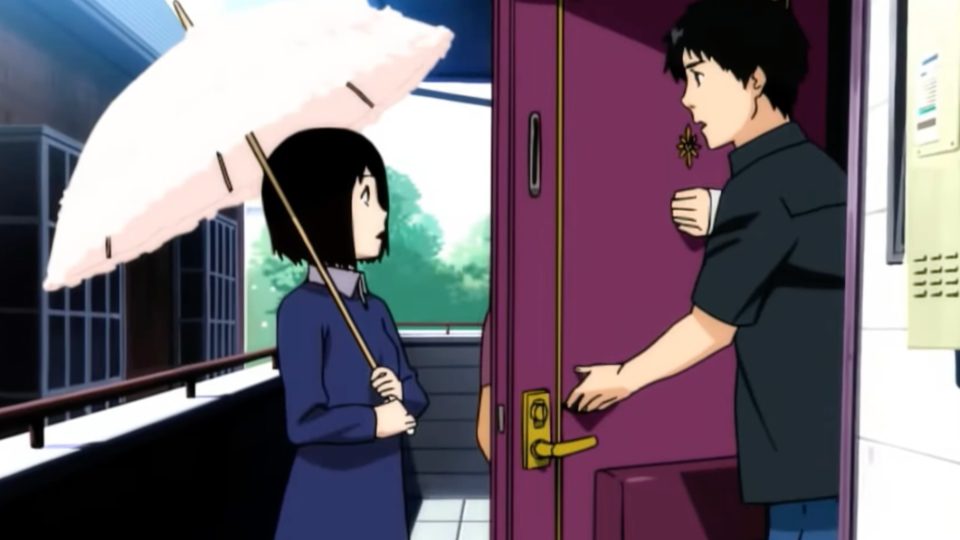
22-year-old NEET named Tatsuhiro who’s convinced that society is out to get him and that the secret organization known as the “NHK” is the root of all his problems. He’s been living in isolation for four years and is content with his hermit life, but his world is turned upside down when he meets a girl named Misaki who offers to help him reintegrate into society.
Throughout the series, Tatsuhiro faces a number of challenges as he is forced to confront his own prejudices and stereotypes and learn to accept himself for who he is. But it’s not an easy process and he’s constantly questioning the true intentions of those around him, including Misaki. He also learns to accept the help of others and form relationships, but it’s hard to shake off the feeling that everyone is out to take advantage of him.
The series also has a melancholic atmosphere, and the tension and suspenseful music and visuals also contribute to its “emo” feel.
6. Grave of the Fireflies
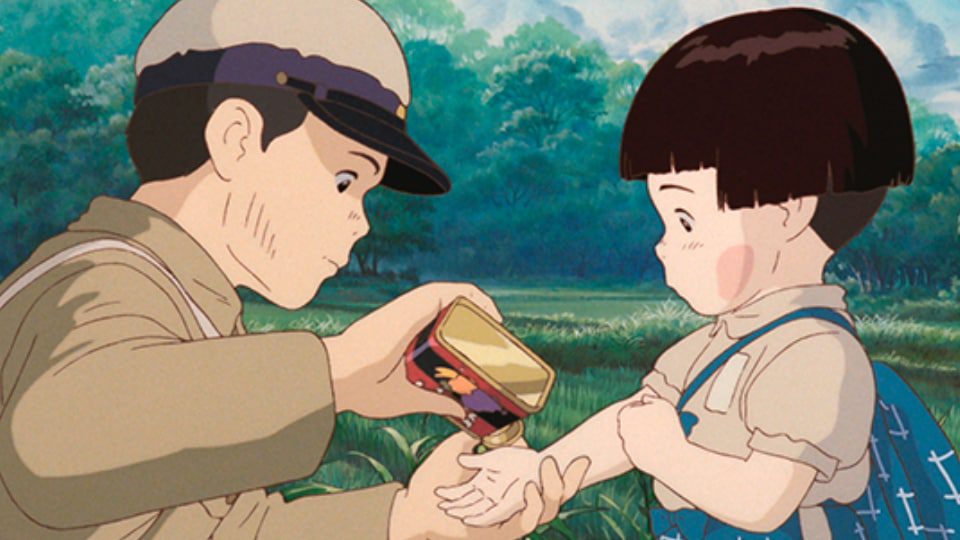
Two siblings, 14-year-old Seita, and her 4-year-old sister, Setsuko miss their father. He was on a battleship in World War II and therefore absent from home, while the bombs that the Americans dropped on their city of residence separate them from their mother. Beyond that there is not much to tell; The narrative deals with Seita and Setsuko’s attempts to survive in war-torn Japan, where food is a rare commodity and man is a wolf.
Ask anyone what is the most depressing emo anime ever made and they will probably say “Grave of Fireflies”. Isao Takahata’s acclaimed anime is now over 3 decades old and is, for me, one of the best anti-war films ever made. The emo aspect serves to highlight the senseless destruction and devastation that war brings. It also manages to capture the innocence and vulnerability of the two main characters, but it only serves to highlight the senseless loss of life caused by war.
5. Erased
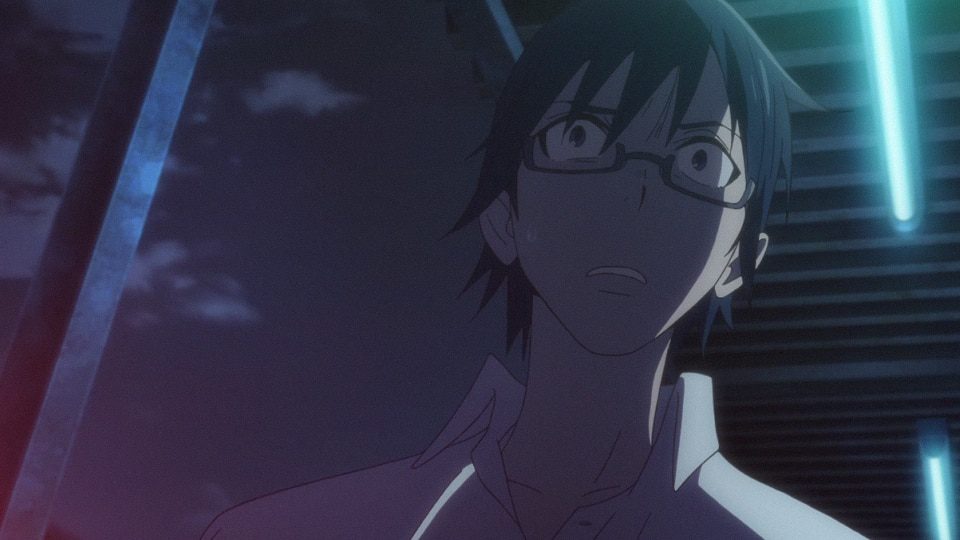
The year 2006. A 29-year-old pizza delivery man was endowed with a mysterious power – every time some disaster was going to happen in his environment, he went several minutes back in time.
He must stop the impending disaster if he wants to move forward in life. One day, our hero witnesses a personal tragedy, and immediately after that Satoru is sent back in time – but this time, not a few minutes back but to 1988, to his hometown in northern Hokkaido. What exactly does he have to find and do in 1988 (and in the body of a 10-year-old boy) to prevent a crime that takes place in 2006? Good question.
This basic premise was enough to turn Erased into an emo sensation – because that’s how it is with this kind of series, the bright light as long as the mystery is not solved. But hey, that’s no reason to forget one of the best suspense emo series, one that makes its viewers guess at every possible second who the culprit is.
4. March Comes in Like a Lion
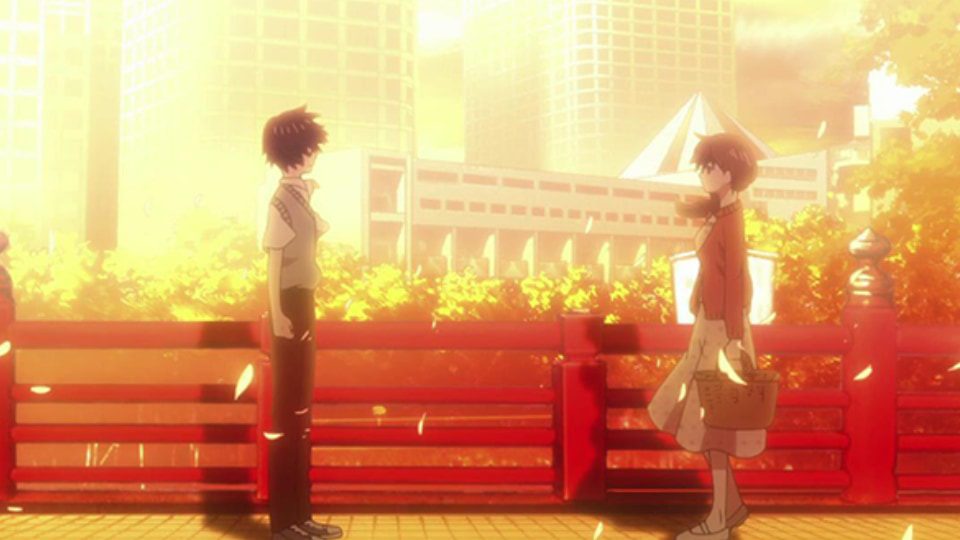
Rei Kiriyama experienced fewer ups and more downs during his life; His parents and sister were killed when he was a child, which forced Ray to choose: either live in an orphanage or with his father’s good friend. Ray – not wanting to be a Charles Dickens cliché – agreed to the family friend’s suggestion.
Rei found out the hard way that an orphanage was better. As we first meet Rei, he is a 17-year-old boy with mental scars that no psychiatrist can treat. He lives alone in a small and empty apartment (but with an extra sea view), after leaving his adoptive family’s home. Although his new adopting dad is not a bad man, living with his stepsister has made Rei an unhappy person; She is the type of person who must be forcibly hospitalized, but instead, she roams free. Now that he has left, Rei is trying to move on, and if you were wondering what a 17-year-old emotional guy does for a living – the answer is Shogi.
Rei struggles to connect with other people and is haunted by the traumatic death of his family. He starts to open up and connect with people after he meets the three sisters Akari, Hinata, and Momo, who live next door to him. They become his friends and family, and they help him to start to heal from his past traumas.
More than anything, this is an anime with an emo atmosphere of depression, joy, family, and alienation. March Comes in Like a Lion is not afraid to deal with morbid topics, even if they are almost immediately replaced by a light tone. You will find drama, fine humor, complex relationships, and even – occasionally – tension. It has everything.
3. Barakamon
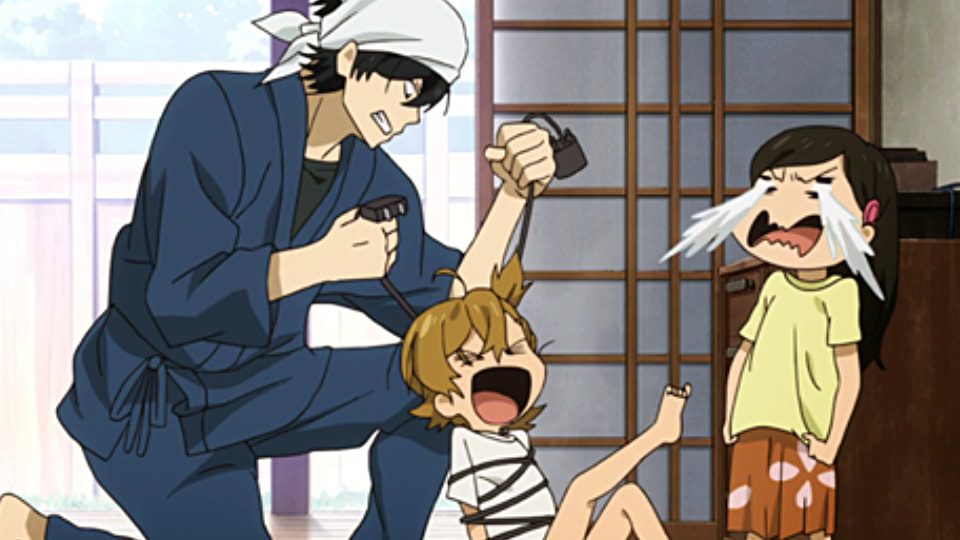
Handa is an outstanding calligrapher. Since calligraphy is a big deal in Japan, Handa takes art very seriously. That’s why when he receives criticism to his dismay from a respected curator at the exhibition, Handa decides to react rationally and beat the old man in front of the audience. Following the incident, Handa was sent to a “refreshment period” in the distant Goto Islands.
Barakamon is an emo series about a second chance: from a distance of 1052.55 kilometers (thanks Internet) Handa is expected to see things from a different point of view, perhaps understanding that there is also room for another opinion. The clean air and green fields may even inspire him to develop. It’s just a shame that most of his time is a babysitter. Handa teams up with a 7-year-old energy bomb named Naru (voiced by a real 7-year-old girl). Thanks to Naru – and the other friends he meets on the island – Handa learns about the small pleasures in life. There is something magical about Barakamon, magic that cannot be found in other emo series.
2. Your Lie In April
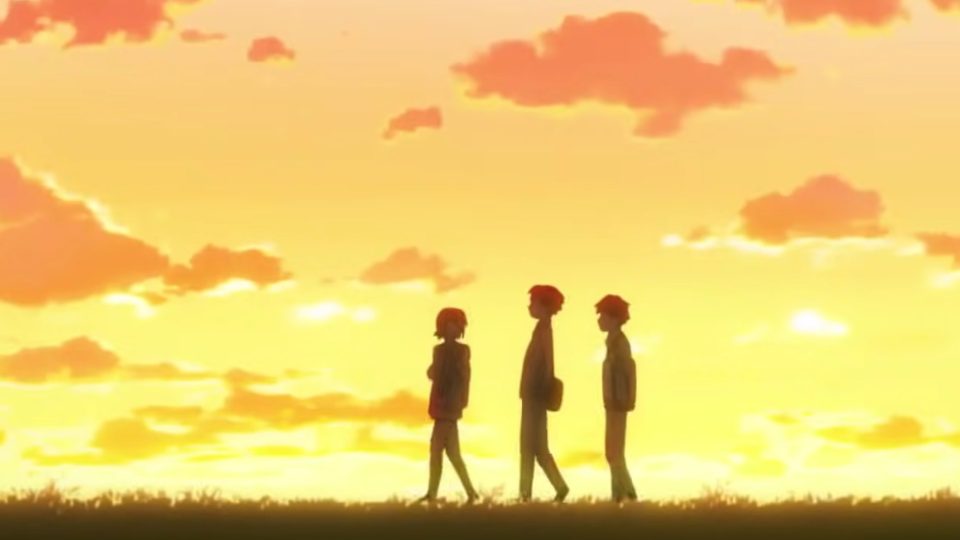
Kousei Arima is a young man who hides away from society until two years ago he was considered to be a genius on the piano. His opponents called him “the human metronome” because his mother, who is also his coach, made sure that her son would play the piano like a machine, with masterful precision, and without emotion or interpretations. Arima’s bright future was cut short when his mother died on the day he was to perform in front of an audience. Arima had a nervous breakdown on stage and never played again.
His life changes when Arima meets a lovely tomboy girl named Kaori, an impulsive and smiling young woman who plays the violin. You are going to cry in Your Lie In April, it is one of the best emo anime series I’ve ever seen, thanks to its humanity, the relationships between the characters (especially between Arima and Kaori), and the music. Whole episodes are dedicated to wonderful concerts, and watching the series will enrich your musical knowledge dozens of times.
The anime uses every dirty trick to get emotions out of you, and it works. Sometimes it feels like abuse, but I’m ready to absorb every emotional whip that the series whips because it does it with grace, beauty, and splendor.
1. Neon Genesis Evangelion
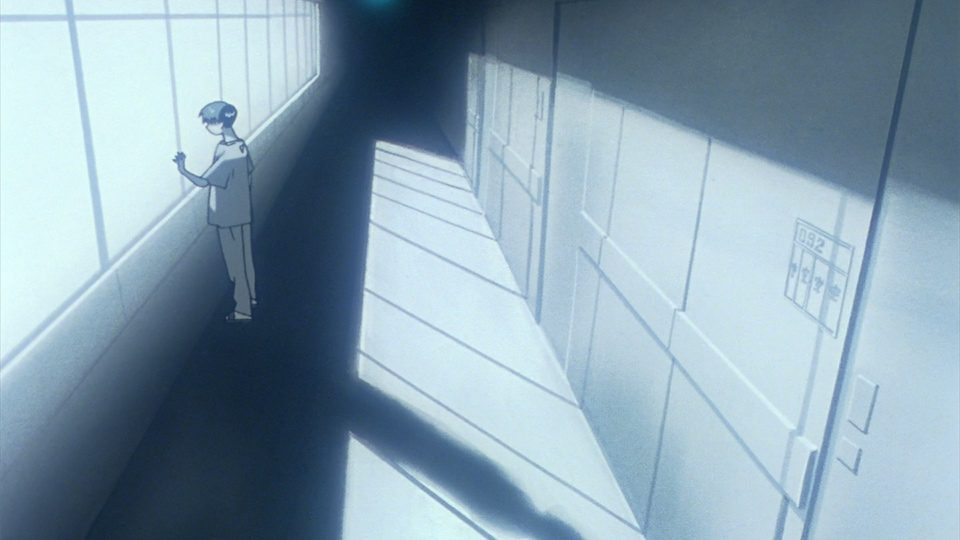
For the newbies among you, the story takes place in the near-plot future, the year 2015: in the “Evangelion” version, there are no iPhones, or TikTok, because, in Evangelion 2015, humanity was almost destroyed in a catastrophic event. The hope of those who remain depends on the organization NERV which belongs to the United Nations, this is because the giant robots of NERV are fighting “angels”: giant monsters that come once in a while and sow destruction and destruction. The phrase “what angel are you” in the “Evangelion” universe is something you say to someone you hate.
Because of many reasons, only emo teenagers can fly these giant robots. Our protagonist Shinji, the son of the head of NERV, hasn’t seen his antipathetic father in years, but the boy is called to fly the new model Unit-01, a model that is supposed to make Mecha great again. The fate of the world hangs, from this moment on, on the shoulders of an emotional boy who mostly wants to be left alone.
Shinji is a problematic protagonist: he is a teenager who hates himself, and I remind you that the year is 1995 and heroes who hate themselves and whine about it were not yet a very popular PC schtick (certainly not in anime). Furthermore: Shinji isn’t even smarter than usual, and he doesn’t have a hidden talent that’s just waiting to burst out – he’s an ordinary kid caught in a situation.
The question here is what is the limit? How much it is possible to see a 14-year-old child complaining about life and how “unfair” everything he is forced to do is? The answer is not much; From a sympathetic figure for 60 and a half seconds, Shinji became an unbearable type (as would happen in reality if a 14-year-old had to learn to match the arm of a giant robot with the face of an angel). Don’t worry, “Evangelion” is indeed a series about depressed people, but not everyone deals with depression-like Shinji: some drown themselves in work, some walk around with a mask – and others simply exist and accept the situation as it is.
Neon Genesis Evangelion is an apocalypse manga born out of the clinical depression Anno suffered for 4 years, and he created the masterpiece series out of deep feelings of depressing frustration he experienced.

